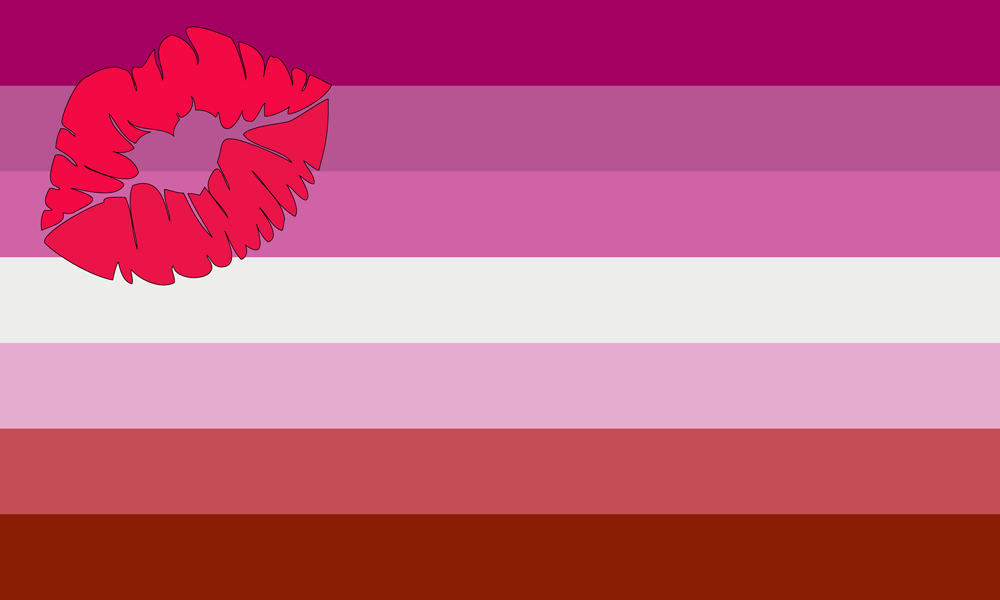
The word lesbian originally meant someone from the island of Lesbos, near what is now Turkey. The ancient Greek poet Sappho lived there and wrote poetry to be sung to music, and is best known for expressing love between women in this work. That’s how the word lesbian has come to mean a woman attracted solely to women. There have been many different lesbian pride flags. There’s one with seven stripes, but the example above is a simpler more recent design from 2018. Stripes from top to bottom represent gender nonconformity, the lesbian community, relationships unique to womanhood, peace and serenity, femininity. And of course some lesbians prefer the original rainbow flag.
Lipstick lesbian

The term ‘lipstick lesbian’ dates back to the 1980s, and is usually used by lesbians who present as more feminine than masculine. It’s part of a range of identities in a spectrum running from femme to butch. Whereas traditional ideas of masculine and feminine come from a homophobic culture that recognised only two genders, the femme / butch spectrum does not presume that a woman wants to be attractive to men at all, or that there are right and wrong ways of achieving attractiveness. It’s been common in the past for straight people to expect that in a lesbian relationship, one partner would be femme and the other butch, as if to mimic the conventions of a straight relationship. While there are relationships that look like this, there’s no reason for anyone to assume that’s how it should be.
The term ‘butch’ could be seen to come from when lesbians had to ‘pass as men’ in order to be in public with another woman, for fear of being arrested. There was a New York criminal statute in the 1960s, that authorised the arrest of anyone not wearing at least three articles of ‘gender-appropriate’ clothing. This discrimination was one of the catalysts of the Stonewall Riot.
Labrys lesbian flag

The labrys, a double-sided axe used by the Amazons – goddesses in Greek myths – is a symbol of authority of women and has been adopted by feminists since the 1970s. It’s associated with lesbian feminism, a movement that sprung from dissatisfaction with homophobia among feminists and with the unpopularity of feminism in male-dominated gay groups in the late 1960s. It appears in this much more recent flag created in 1999 by Sean Campbell. Its being designed by a gay man, not by a woman, has made this flag less popular among lesbians. Some transphobic groups have attempted to claim the labrys as a symbol for their campaigns, but the flag was never grounded in transphobia.
This flag also reclaims the black triangle badge that had been used by nazis to identify gay women who were sent to concentration camps for being ‘asocial’ as the nazis called it. The violet colour of the background is associated with lesbians due to the poetry of Sappho, and her mentioning ‘violet crowns’, lavenders, and the colour purple frequently in her poems about women and so violets became synonymous with desire. Before the late 19th Century, when purple dye was more accessible and the colour became a trend, it was common for ladies to gift each other violets as a subtle expression of love.
Events:
- Lesbian Visibility Day: 26 April
- International Lesbian Day: 8 October